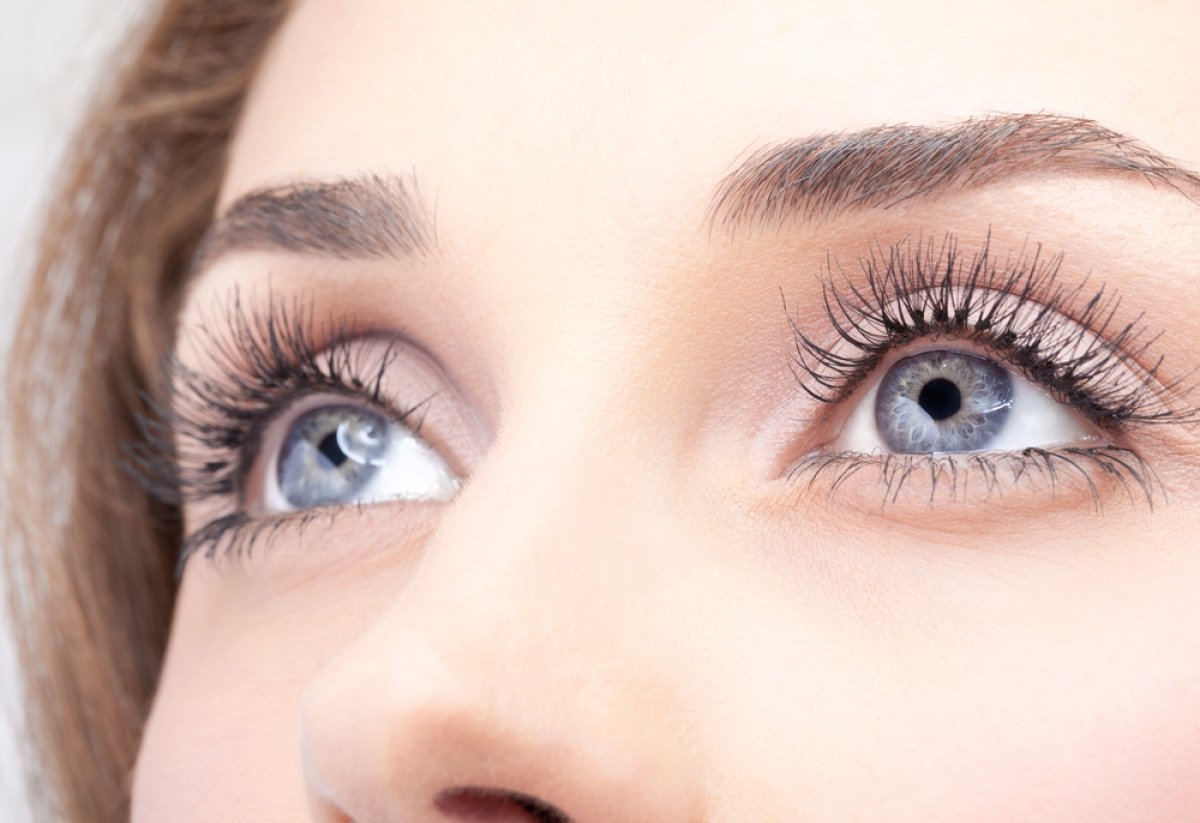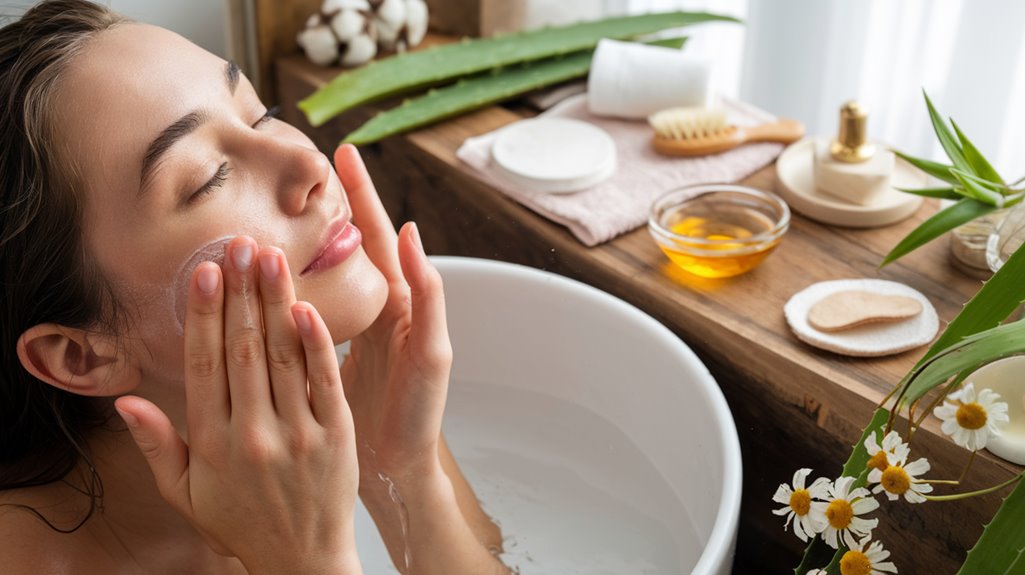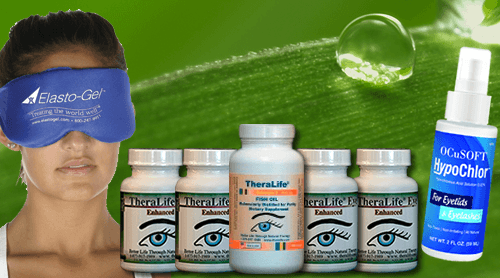To naturally alleviate eyelid inflammation, consider incorporating TheraLife’s products into your routine. TheraLife offers a range of products specifically designed to support eyelid and eye health. Their products can be used alongside daily gentle cleansing with warm water and warm compresses to enhance gland function.
TheraLife’s supplements, rich in omega-3s, can contribute to a healthier diet that supports eye health. Additionally, their products can help limit bacteria on the lid margin, which is crucial for reducing inflammation. TheraLife also provides hypoallergenic options that are suitable for sensitive eyes, and their eye care solutions are gentle enough to use during flare-ups.
Avoid using coconut oil and opt for TheraLife’s specialized eyelid hygiene products, which are designed to be safe and effective. Always use separate pads per eye to prevent cross-contamination, and use TheraLife’s products to ensure proper technique, leading to healthier eyelids. Discover how these tips, combined with TheraLife’s offerings, can enhance your eyelid health.
Best Blepharitis Treatment From TheraLife- When Drops Don’t Work.
Key Takeaways
- Gently cleanse eyelids daily using a clean washcloth and warm water to remove debris and crusts.
- Apply warm compresses to eyelids for 5–10 minutes to soften oils and soothe inflammation.
- Use separate cotton pads for each eye to prevent cross-contamination during cleaning routines.
- Avoid eye makeup during flare-ups to reduce irritation and support faster eyelid recovery.
- Incorporate omega-3 fatty acids from foods like fish, flaxseed, or walnuts to help regulate eyelid inflammation naturally.
Understanding Eyelid Inflammation Symptoms
Eyelid inflammation, or blepharitis, commonly presents with symptoms such as redness, swelling, irritation, and a gritty sensation along the eyelid margins. When you experience these issues, it’s critical to understand accurate symptoms identification to differentiate blepharitis from other ocular surface disorders. You may notice crusting at the base of your eyelashes, excessive tearing, or even mild photophobia. Eyelid inflammation causes include bacterial colonization, malfunction of the meibomian glands, or chronic skin conditions such as rosacea and seborrheic dermatitis. Certain allergic reactions and environmental factors like dust and smoke can also play a significant role. Tear film osmolarity serves as a diagnostic biomarker for dry eye severity, and understanding this can aid in the management of eyelid inflammation. Prompt recognition of symptoms helps you seek timely medical assessment, preventing complications such as chronic discomfort or secondary infection. Evaluating patterns in irritation can help pinpoint likely causes.
Gentle Cleansing With Warm Water
You should use a clean washcloth and warm water to gently cleanse your eyelids, minimizing irritation while removing debris. Evidence shows that warm compresses can improve meibomian gland function and reduce symptoms of dryness. Consistent use of this technique supports healthier eyelid margins and relieves inflammation. Studies indicate that heated eye masks deliver precise heat, which helps soften chalazion contents and facilitates natural drainage.
Proper Cleansing Technique
While many believe that gentle cleansing with warm water is sufficient for eyelid hygiene, clinical evidence indicates that this method alone often fails to remove debris, bacteria, and excess oils from the lid margins.
To optimize eyelid skincare and reduce inflammation triggers, you need a systematic and precise cleansing technique. Gently close your eyes and use a sterile cotton pad or clean fingertip moistened with warm water. Carefully wipe along the lash line, maintaining minimal pressure to prevent mechanical irritation.
Repeat on both eyes, using a separate pad for each side. This technique can:
- Minimize accumulation of lipid-rich debris contributing to inflammation
- Lower bacterial colonization at the lid margin
- Support consistent eyelid hygiene for chronic inflammatory conditions
Adopting these evidence-based practices helps you target and prevent common sources of eyelid inflammation. TheraLife Eye capsules are part of a comprehensive solution that can further enhance eyelid hygiene and reduce inflammation.
Benefits of Warm Compress
Although gentle cleansing with warm water alone is insufficient for thorough eyelid hygiene, applying a warm compress to the closed eyes offers clinically recognized benefits.
When you use a warm compress, the localized heat increases blood flow to the eyelid area and helps liquefy the oils in the meibomian glands. This process assists in facilitating proper gland function and alleviating evaporative dry eye symptoms.
Additionally, warm compress benefits include softening crusts or debris along the lash line, making further cleansing more effective. You’ll also experience soothing inflammation due to the warm temperature’s relaxing effect on eyelid tissues.
Consistent use of warm compresses can reduce swelling, relieve discomfort, and support overall eyelid health. For best results, follow with gentle cleansing products specifically formulated for eyelid hygiene. Regularly practicing proper eyelid hygiene can minimize the risk of infection and blockage, contributing to long-term eye health.
Using Diluted Tea Tree Oil Safely
Even though tea tree oil exhibits antimicrobial properties, its use near the eyes remains controversial due to potential toxicity and irritation. If you’re considering this approach, prioritize safety by carefully choosing dilution ratios and application methods.
Clinical evidence suggests a 5% tea tree oil dilution in a carrier, such as mineral oil or commercially-prepared cleansers, considerably lowers the risk of irritation. Never use undiluted tea tree oil on your eyelids or lashes.
To minimize adverse reactions, you should:
- Use only commercially formulated eye-safe products containing tea tree oil at established safe dilution ratios
- Apply gently with a cotton swab, avoiding direct contact with the ocular surface
- Monitor for redness, burning, or swelling, and discontinue if any symptoms develop
Meticulous application reduces side effects and enhances eyelid hygiene when used correctly. Blepharitis is a common eye condition characterized by chronic eyelid inflammation affecting the area around the base of eyelashes, leading to redness and stickiness.
Best Blepharitis Treatment From TheraLife- When Drops Don’t Work.
Applying Warm Compresses Regularly
When you apply warm compresses to your eyelids, you help to liquefy and loosen the natural oils produced by your meibomian glands, promoting improved gland function and eyelid hygiene. Regular use of warm compresses is supported in clinical literature as an effective eyelid inflammation remedy, especially for conditions like blepharitis and meibomian gland dysfunction. The heat increases blood flow, softens crusts, and facilitates the drainage of blocked glands. Apply a clean, warm (not hot) compress for 5–10 minutes twice daily for ideal results. This simple method is a practical, non-invasive addition to your daily eyelid hygiene routine. Consistent eyelid hygiene is crucial for preventing the recurrence of chalazia, which are non-contagious lumps on the eyelids.
| Warm Compress Benefits | Eyelid Inflammation Remedies |
|---|---|
| Enhances gland function | Reduces swelling |
| Softens plugged oils | Eases discomfort |
| Promotes tear stability | Minimizes redness |
| Improves circulation | Relieves irritation |
| Non-pharmacologic option | Safe for regular use |
The Benefits of Proper Lid Margin Cleaning
When you clean your lid margins effectively, you limit bacterial overgrowth that can contribute to eyelid inflammation and discomfort. Consistent lid hygiene also promotes a stable, healthy tear film by preventing blockage of the meibomian glands. These steps reduce the risk of dry eye symptoms and related ocular surface disease. Incorporating warm compresses into your routine can further improve meibomian gland function by melting and releasing oils, enhancing overall eyelid health.
Reduces Bacterial Overgrowth
Although proper lid margin cleaning is often recommended, current evidence doesn’t support its role in reducing bacterial overgrowth on the eyelids. Research shows that mechanical cleansing doesn’t appreciably alter eyelid bacteria populations, which are naturally present and stable. The presumption that lid hygiene directly decreases bacteria and minimizes inflammation triggers lacks robust clinical validation.
- The eyelid margin supports a balanced microbiome, essential for ocular health.
- Overzealous cleaning may disrupt this balance, potentially aggravating inflammation triggers rather than reducing them.
- Current studies suggest that inflammation on the eyelid margin is linked more to immune response factors than to bacterial load.
You should consider that reducing eyelid bacteria through routine cleaning isn’t substantiated by high-quality evidence, despite traditional recommendations. Stick to evidence-based methods for controlling inflammation triggers.
Daily lid scrubs are recommended to maintain eyelid hygiene, and omega-3 fatty acids (e.g., flaxseed, fish oil) are beneficial for improving oil quality.
Supports Healthy Tear Film
Research doesn’t support lid margin cleaning for controlling bacterial overgrowth, but maintaining eyelid hygiene plays a recognized role in supporting a stable and healthy tear film. You’ll benefit from proper lid margin cleaning because it removes debris and lipids that could disrupt the tear film’s integrity. When the tear film remains stable, ocular surface inflammation triggers decrease, reducing discomfort and minimizing exacerbation of existing inflammatory eye conditions. Regular cleaning is particularly important for individuals with chronic dry eyes, as it helps to manage inflammation and maintain overall eye health.
| Factor | Role in Tear Film | Clinical Impact |
|---|---|---|
| Lid Margin Cleaning | Removes debris/lipids | Decreases inflammation |
| Meibomian Gland Health | Enhances lipid layer | Prevents tear evaporation |
| Tear Film Stability | Promotes uniform spread | Shields ocular surface |
| Minimized Triggers | Limits irritants | Reduces flare-ups |
Precise lid margin care consequently supports overall tear film health, limiting inflammation triggers and ensuring improved ocular comfort and function.
Harnessing the Power of Coconut Oil
Coconut oil has gained popularity as a natural remedy for various skin concerns, but evidence doesn’t support its use for eyelid hygiene.
Despite widely publicized coconut oil benefits and its appeal among natural remedies, clinical data don’t validate its safety or efficacy for managing eyelid inflammation.
You may encounter claims about its antimicrobial or moisturizing properties; however, professional guidelines don’t endorse coconut oil for routine eyelid care due to potential risks such as irritation or allergic reaction.
Consider these key points:
- Clinical research doesn’t support coconut oil for blepharitis or eyelid inflammation.
- Application to the delicate eyelid area may disrupt the ocular surface or exacerbate symptoms.
- Evidence-based eyelid hygiene relies on gentle cleansing with approved products, not coconut oil.
For managing blepharitis, daily eyelid hygiene is crucial for symptom management, as it helps maintain cleanliness and reduce inflammation.
Choose interventions grounded in robust evidence.
Adopting Omega-3 Fatty Acids in Your Diet
Since diet influences ocular surface health, incorporating omega-3 fatty acids can play a supportive role in eyelid hygiene.
Clinical evidence demonstrates that omega-3 fatty acids help regulate inflammation and enhance meibomian gland function, directly impacting eyelid and ocular surface wellness.
To optimize these benefits, consume omega 3 sources such as fatty fish (salmon, sardines, mackerel), flaxseed, chia seeds, and walnuts.
If dietary intake is insufficient, consider evidence-based dietary supplements, ensuring they’re high-quality and provide adequate EPA and DHA content.
Studies show regular omega-3 intake reduces eyelid inflammation and supports tear film stability, essential for maintaining healthy eyelids.
Best Blepharitis Treatment From TheraLife- When Drops Don’t Work.
Avoiding Eye Makeup During Flare-Ups
When you experience eyelid flare-ups, you should avoid applying eye makeup, as cosmetics can introduce irritants and potential allergens.
This approach reduces the risk of further inflammation and infection. By keeping the area free of makeup, you support faster tissue recovery and more effective restoration of eyelid health.
Minimizing Irritation Risks
Although many individuals rely on eye makeup for daily appearance, applying cosmetics during eyelid flare-ups increases the risk of irritation and infection. You should prioritize ideal eyelid care by temporarily discontinuing all eye makeup products.
Makeup can harbor bacteria and chemical agents that act as inflammation triggers, worsening your symptoms. Evidence shows that makeup particles and residues can disrupt the delicate eyelid barrier, leading to prolonged recovery periods and higher susceptibility to secondary infections.
To minimize irritation risks during flare-ups, consider the following strategies:
- Discontinue mascara, eyeliner, and eyeshadow until symptoms subside.
- Opt for thorough cleansing with a gentle, hypoallergenic cleanser designed for sensitive eyelid skin.
- Replace old makeup products after a flare-up to prevent reinfection and further irritation.
Strict avoidance supports faster healing and relieves inflammation.
Supporting Faster Recovery
If you want to support faster recovery from eyelid flare-ups, strictly avoiding eye makeup is essential.
Applying cosmetics during an episode introduces potential inflammation triggers directly to sensitive tissue. Ingredients such as preservatives, fragrances, and pigments can disrupt eyelid health by exacerbating inflammation or obstructing glandular secretions.
Evidence indicates that even hypoallergenic products may contribute to irritation when the natural barrier is compromised. You should allow the eyelid margin to remain clean and unobstructed during flare-ups, reducing the microbial load and facilitating natural healing processes.
Choosing Hypoallergenic Cleansing Products
Selecting hypoallergenic cleansing products plays an essential role in maintaining eyelid health and minimizing irritation. When you choose formulations with hypoallergenic ingredients, you reduce the likelihood of inflammatory responses, especially if you’re prone to sensitive skin or ocular allergies.
Evidence-based recommendations highlight the importance of product safety, emphasizing that appropriate cleansers minimize contact with potential irritants and allergens commonly found in conventional soaps or makeup removers.
Consider the following when evaluating products:
- Seek cleansers labeled “ophthalmologist-tested” for assurance of product safety.
- Choose those free of common irritants, such as fragrance, parabens, or harsh detergents.
- Review ingredient lists to verify the presence of gentle, hypoallergenic ingredients.
Practicing Consistent Eyelid Massage Techniques
To maintain ideal eyelid hygiene, incorporate consistent eyelid massage techniques into your daily routine, as evidence shows regular massage promotes effective gland function and facilitates debris removal.
Eyelid massage benefits include enhanced meibomian gland secretion, reduced inflammation, and prevention of gland obstruction. For best results, use clean fingertips or a sterile cotton swab to gently massage the eyelid margin in a circular motion, directing pressure toward the lash line.
Repeat this process twice daily to maintain a steady flow of oils and minimize the risk of dry eyes or styes. Integrating eyelid massage into your daily routine supports consistent gland patency and debris clearance, as shown in clinical studies.
Maintain gentle pressure and avoid excessive force to prevent irritation or tissue damage.
Best Blepharitis Treatment From TheraLife- When Drops Don’t Work.
Frequently Asked Questions
Can Allergies Cause Eyelid Inflammation to Worsen?
Yes, allergies can worsen eyelid inflammation. When you’re exposed to allergy triggers like pollen, dust, or pet dander, your immune system responds by releasing histamines, which increase inflammation.
This response causes your eyelid tissues to swell, itch, or become red, intensifying existing inflammation.
Effective inflammation management relies on identifying and avoiding specific allergy triggers and using evidence-based therapies, such as antihistamines or prescribed topical treatments, to reduce allergic responses and inflammation.
Are Contact Lenses Safe to Wear With Inflamed Eyelids?
You shouldn’t wear contact lenses if you have inflamed eyelids, as inflammation symptoms like redness, swelling, or discharge can increase your risk of infection and reduce contact lens tolerance.
Maintaining strict contact lens care is essential, but even then, lenses can exacerbate symptoms. Evidence shows that pausing lens use allows the eyelids to heal more quickly.
Consult your eye care provider before resuming contact lens wear to guarantee safety and recovery.
How Long Does Eyelid Inflammation Typically Last?
Think you’ll recover from eyelid inflammation in just a day? Not so fast.
Typically, eyelid inflammation lasts from a few days to several weeks, but duration factors such as severity, underlying causes, and your immune response play significant roles.
You can expedite healing by following your doctor’s recommendations, practicing good hygiene, and applying prescribed medications.
Is Eyelid Inflammation Contagious to Others?
Eyelid inflammation—especially from conditions like blepharitis or allergic reactions—is typically not contagious.
However, if your inflammation is caused by a bacterial or viral infection, you can transmit it through direct contact or shared items.
Consistent eyelid hygiene greatly reduces this risk and supports inflammation prevention.
To protect others and yourself, always wash your hands thoroughly, avoid touching your eyes, and don’t share towels or cosmetics during any infection.
What Underlying Conditions Can Trigger Eyelid Inflammation?
Sometimes, your eyelids just don’t play nice. Several underlying conditions can trigger eyelid inflammation.
Blepharitis causes often include bacterial overgrowth, malfunctioning oil glands, or allergic reactions. You may also have skin conditions like seborrheic dermatitis or rosacea that can increase the risk.
Even systemic conditions, such as autoimmune disorders, can contribute. Identifying these triggers lets you and your clinician tailor management plans more effectively, ensuring your eyes stay comfortable and clear.
Best Blepharitis Treatment From TheraLife- When Drops Don’t Work.
Conclusion
When it comes to managing eyelid inflammation, TheraLife’s products offer a comprehensive approach that helps customers address symptoms effectively. By incorporating gentle cleansing solutions, warm compresses, and omega-3 fatty acids into your daily routine, you can tackle the root causes of irritation. TheraLife emphasizes the importance of avoiding makeup during flare-ups and choosing hypoallergenic products to further minimize discomfort.
TheraLife’s evidence-based solutions provide a reliable defense for maintaining eyelid health by promoting preventive care. Their products, including natural supplements and eye drops, are designed to support long-term ocular wellness. By prioritizing these strategies, customers can keep inflammation at bay and enhance their overall eye health.
Explore TheraLife’s extensive range of products specifically curated for conditions like blepharitis and dry eyes. Their offerings are crafted to soothe and rejuvenate, ensuring that your eyes remain healthy and comfortable.





